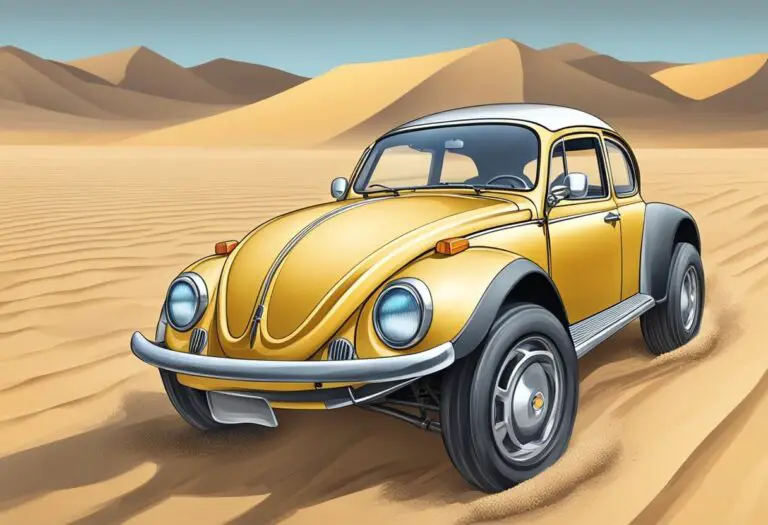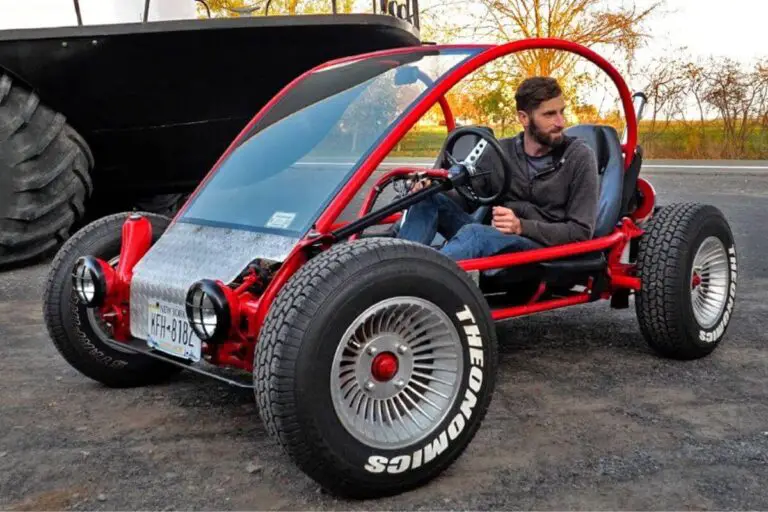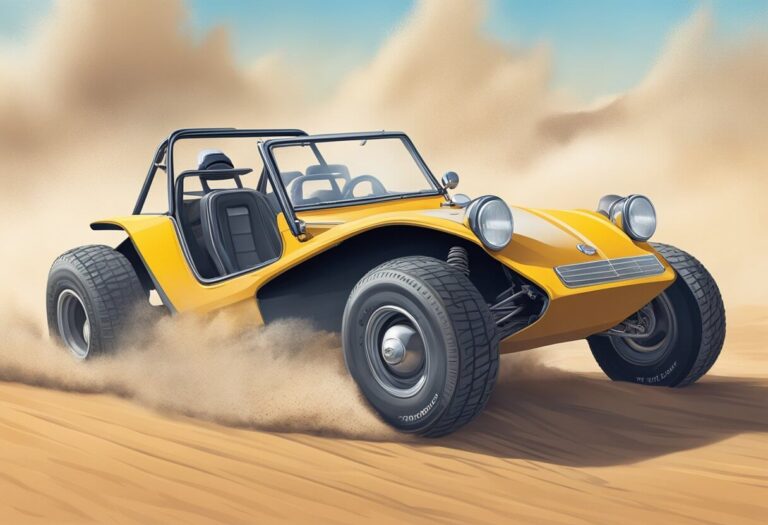1967 Volkswagen Dune Buggy: A Classic Off-Road Vehicle
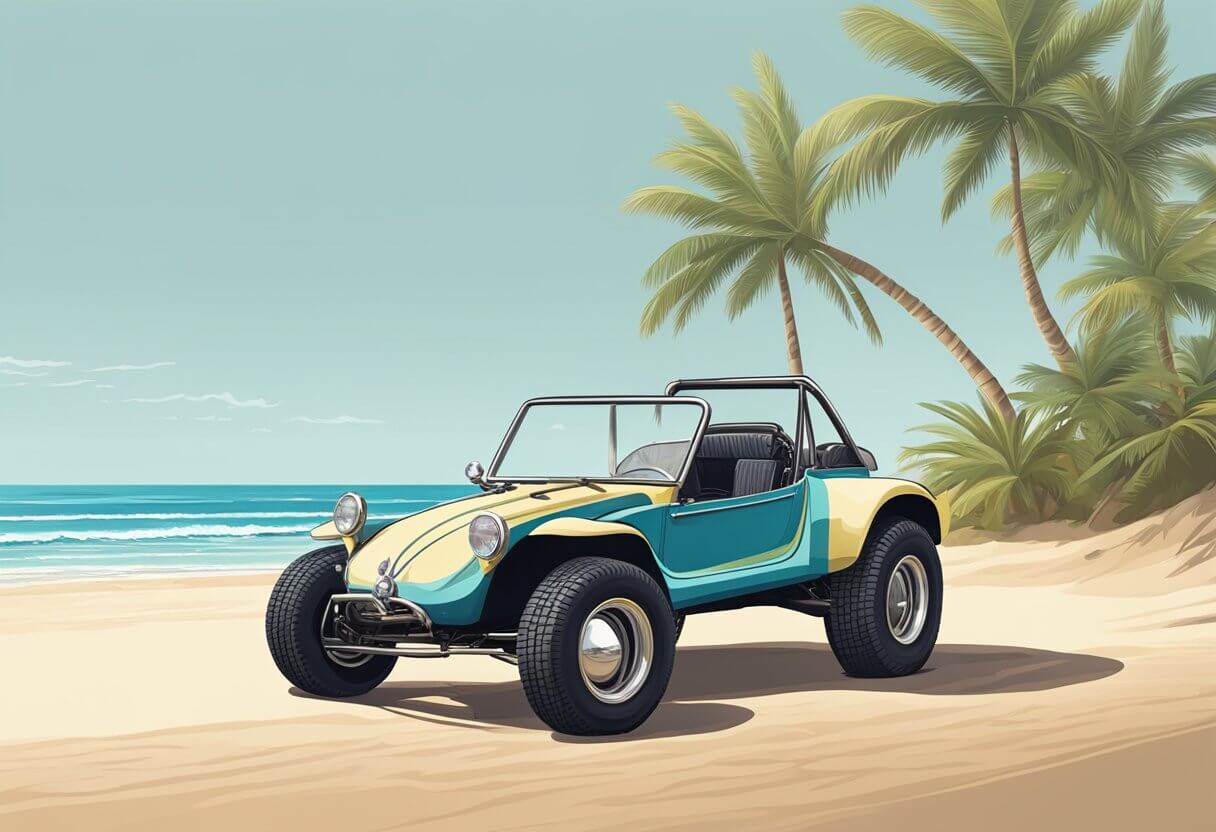
The 1967 Volkswagen Dune Buggy is a classic vehicle that has been capturing the hearts of car enthusiasts for decades. This unique car was originally designed to be driven on the sand dunes of California, but it quickly became popular for its fun and stylish design. Today, the 1967 Volkswagen Dune Buggy is considered a collectible car, and it is sought after by many collectors and enthusiasts.
Historically, the Volkswagen Dune Buggy was designed in the 1960s by Bruce Meyers, a California-based surfer and boat builder. The car was created to be an affordable and fun vehicle that could be driven on the sand dunes of southern California. The car’s lightweight design and powerful engine made it a hit with surfers and beachgoers, and it quickly became a cultural icon.
The 1967 Volkswagen Dune Buggy is known for its unique design and features. The car’s fiberglass body and open-air design make it perfect for sunny days, and its powerful engine provides plenty of speed and performance. Other notable features of the car include its off-road tires, roll bar, and bucket seats. Overall, the 1967 Volkswagen Dune Buggy is a fun and unique vehicle that has captured the hearts of car enthusiasts for decades.
Key Takeaways
- The 1967 Volkswagen Dune Buggy was originally designed to be driven on the sand dunes of California, but it quickly became popular for its fun and stylish design.
- The car was created by Bruce Meyers, a California-based surfer and boat builder, and it quickly became a cultural icon.
- The 1967 Volkswagen Dune Buggy is known for its unique design and features, including its fiberglass body, open-air design, and powerful engine.
Historical Background
Origins of the Dune Buggy
The Dune Buggy is a type of off-road vehicle that was first developed in the 1960s. The origins of the Dune Buggy can be traced back to Southern California, where a man named Bruce Meyers created the first prototype in 1964. Meyers was inspired by the lightweight, high-performance vehicles used in off-road races, and he wanted to create a similar vehicle that could be used for recreational purposes.
The first Dune Buggy was built on the chassis of a Volkswagen Beetle, which was stripped down to its basic components and then modified to create a lightweight, open-air vehicle that could handle the rough terrain of the desert. The body of the vehicle was made from fiberglass, which was lightweight and durable, and it was designed to resemble a dune buggy.
Popularity in the 1960s
The Dune Buggy quickly became popular in Southern California, where it was embraced by the counterculture of the 1960s. The vehicle was seen as a symbol of freedom and rebellion, and it was often used to explore the desert and other off-road areas. The Dune Buggy was also popular with surfers, who used it to transport their surfboards to the beach.
The popularity of the Dune Buggy continued to grow throughout the 1960s, and it became a cultural icon of the era. The vehicle was featured in movies and TV shows, and it was often seen at music festivals and other events. The Dune Buggy was also popular with celebrities, who were often seen driving them around Hollywood.
Design and Features
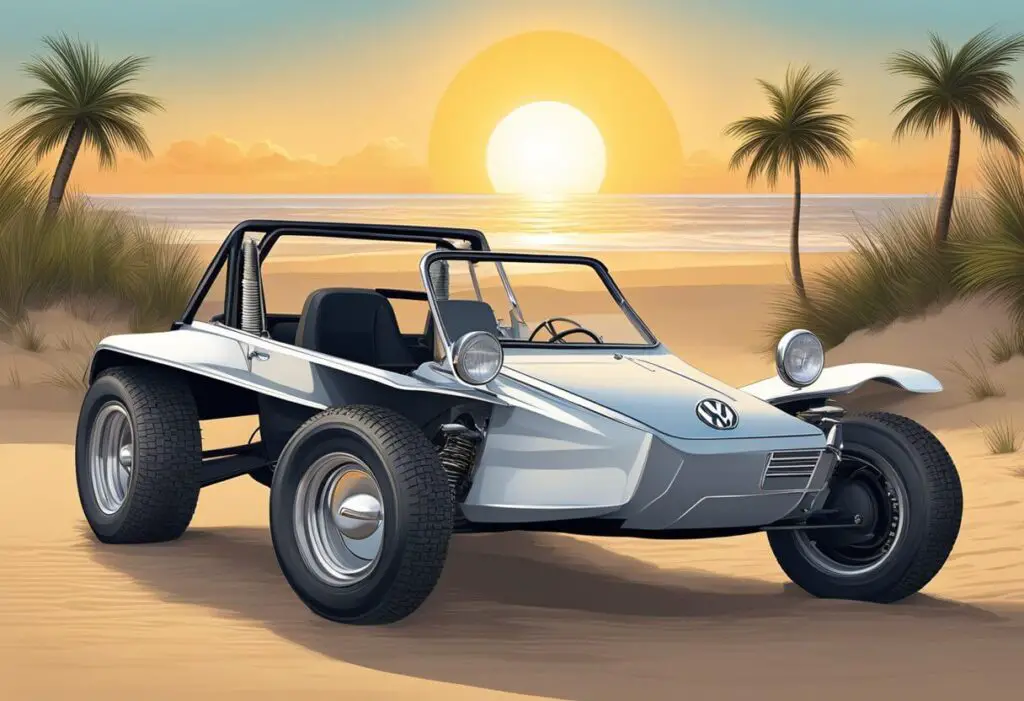
Chassis and Frame
The 1967 Volkswagen Dune Buggy is built on a shortened VW Beetle chassis. The frame is made of tubular steel and is designed to provide rigidity and strength to the vehicle. The suspension system consists of torsion bars and adjustable shock absorbers, which provide a comfortable ride even on rough terrain. The buggy’s low center of gravity and wide stance make it stable and agile, allowing it to easily navigate through sand dunes and other off-road environments.
Engine Specifications
The 1967 Volkswagen Dune Buggy is powered by a 1500cc air-cooled flat-four engine that produces 53 horsepower and 78 lb-ft of torque. The engine is mated to a four-speed manual transmission, which provides smooth and precise gear shifts. The buggy’s light weight and aerodynamic design allow it to achieve a top speed of around 62 mph.
Body and Aesthetics
The body of the 1967 Volkswagen Dune Buggy is made of fiberglass and is designed to resemble a classic dune buggy. The buggy’s open-air cockpit and minimalist design give it a unique and adventurous look. The buggy’s bucket seats are covered in durable vinyl, and the floor is covered in rubber mats to protect against sand and water. The buggy’s windshield and roll bar provide added safety and protection for the driver and passenger.
Cultural Impact
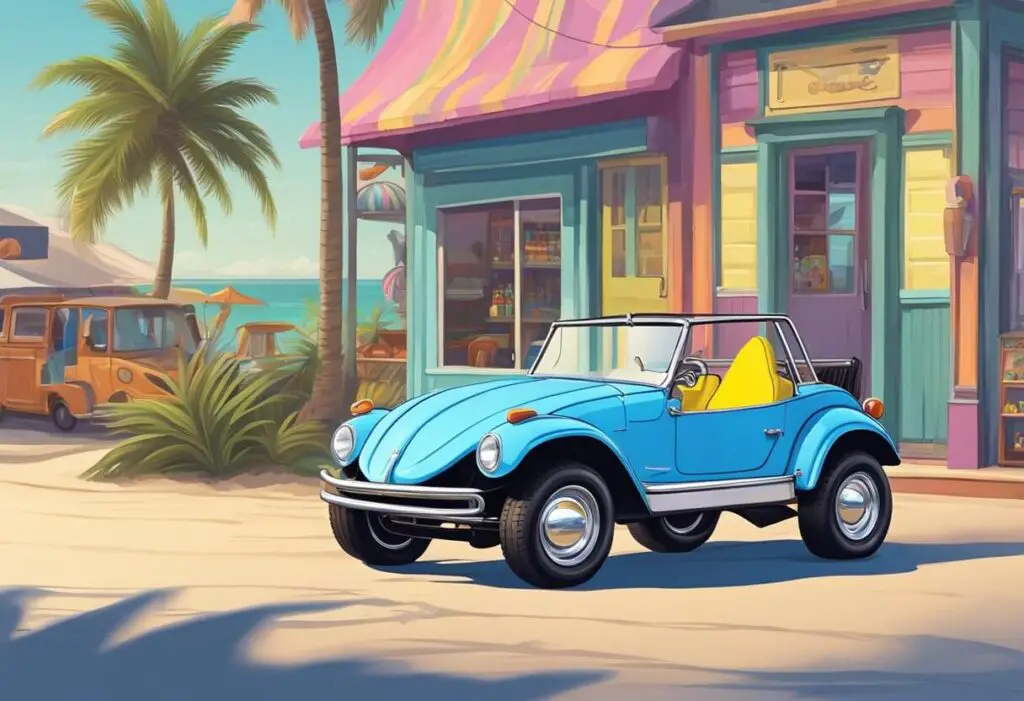
In Motorsports
The Volkswagen Dune Buggy has had a significant impact on the world of motorsports. The lightweight and nimble design of the Dune Buggy made it a popular choice for off-road racing and rallying. In the 1960s and 1970s, the Dune Buggy was a common sight at off-road races such as the Baja 1000 and the Mint 400.
The Dune Buggy’s popularity in motorsports was due in part to its affordability and ease of customization. Many racers would modify their Dune Buggies to improve their performance, adding features such as roll cages, high-performance engines, and suspension upgrades.
In Media and Entertainment
The Volkswagen Dune Buggy has also had a significant impact on popular culture, appearing in numerous films, television shows, and music videos. One of the most famous appearances of the Dune Buggy in popular culture was in the 1968 film “The Thomas Crown Affair,” in which Steve McQueen’s character drives a Dune Buggy during a beach chase scene.
The Dune Buggy has also appeared in numerous music videos, including the video for the Beach Boys’ song “Surfin’ Safari.” The Dune Buggy’s association with beach culture and surfing has made it an iconic symbol of the California lifestyle.
In addition to its appearances in films and music videos, the Dune Buggy has also been featured in numerous television shows, including “The Beverly Hillbillies” and “The Love Boat.” Its unique design and association with adventure and freedom have made it a popular symbol of the counterculture movement of the 1960s and 1970s.
Ownership and Maintenance
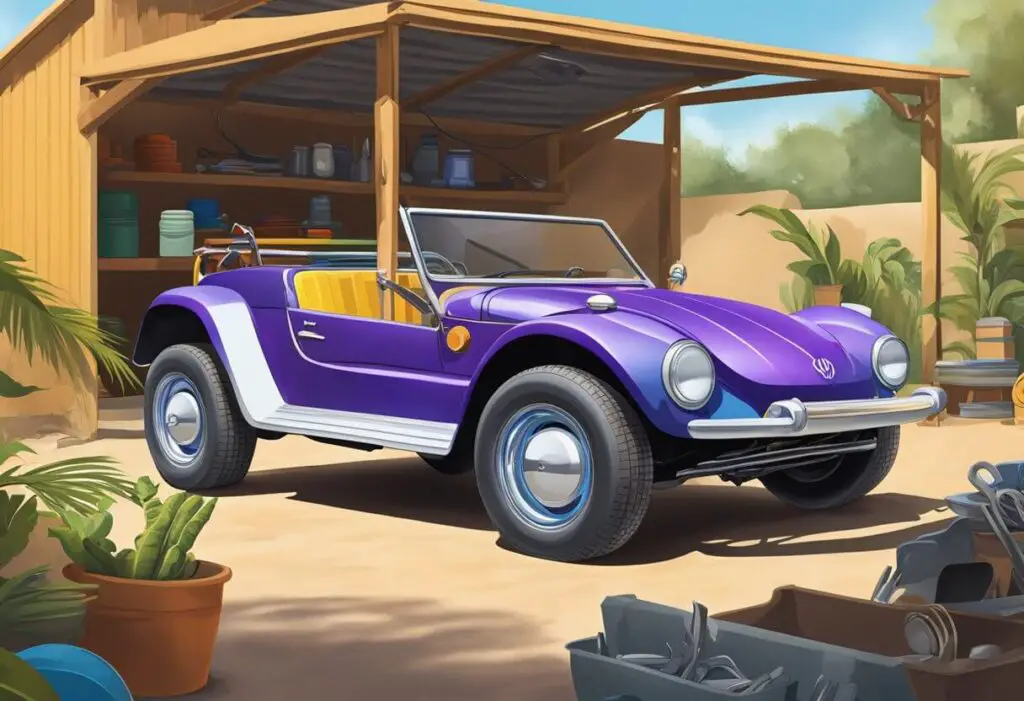
Purchasing a 1967 Volkswagen Dune Buggy
When purchasing a 1967 Volkswagen Dune Buggy, it is important to do your research and ensure that you are getting a reliable and well-maintained vehicle. Consider factors such as the condition of the body and frame, the engine and transmission, and the overall level of customization. It is also important to ensure that the vehicle has all the necessary documentation, such as the title and registration.
Restoration and Customization
Restoring and customizing a 1967 Volkswagen Dune Buggy can be a fun and rewarding project. However, it is important to have the necessary knowledge and skills to ensure that the work is done safely and correctly. Consider factors such as the level of customization desired, the availability of parts and materials, and the overall budget for the project.
Maintenance Tips
Regular maintenance is essential for keeping a 1967 Volkswagen Dune Buggy running smoothly and reliably. Some key maintenance tips include:
- Regularly checking and changing the oil and other fluids
- Inspecting and replacing worn or damaged parts, such as belts and hoses
- Keeping the tires properly inflated and aligned
- Cleaning and lubricating moving parts, such as the suspension and steering components
By following these tips and performing regular maintenance, owners can help ensure that their 1967 Volkswagen Dune Buggy remains in top condition for many years to come.
Market and Collectability
Current Market Value
The 1967 Volkswagen Dune Buggy is a classic car that has gained popularity over the years. The market value of this car varies depending on the condition, mileage, and model. According to the search results, the current market value of a 1967 Volkswagen Dune Buggy ranges from $4,995 to $14,900. The price can be affected by factors such as the condition of the car, the mileage, and the rarity of the model.
Collectors’ Interest
The 1967 Volkswagen Dune Buggy has been a popular collector’s item for many years. Collectors are interested in this car because of its unique design, history, and rarity. The car’s fiberglass body and open-air design make it a perfect vehicle for off-road adventures. The car’s popularity has led to an increase in demand, which has resulted in an increase in its value.
Collectors are interested in owning a 1967 Volkswagen Dune Buggy because it is a rare and unique car. The car’s popularity has led to an increase in the number of people who are interested in owning one. The car’s history and design make it a valuable addition to any car collection.
Legal and Safety Considerations

Street Legality
When it comes to street legality, it is important to note that not all dune buggies are street legal. In some states, they may require additional modifications to meet safety and emissions standards. However, the 1967 Volkswagen Dune Buggy is street legal in California, provided it meets certain requirements. It must have a full roll cage, fuel cell, and be smog exempt. It is important to check with local authorities to ensure compliance with all necessary regulations before driving the vehicle on public roads.
Safety Features
The 1967 Volkswagen Dune Buggy is equipped with several safety features to ensure the safety of the driver and passengers. It has a full roll cage, which provides additional protection in the event of a rollover. The fuel cell is also a safety feature, as it reduces the risk of fire in the event of a collision. Additionally, the Dune Buggy has a four-speed manual transmission, which gives the driver more control over the vehicle.


